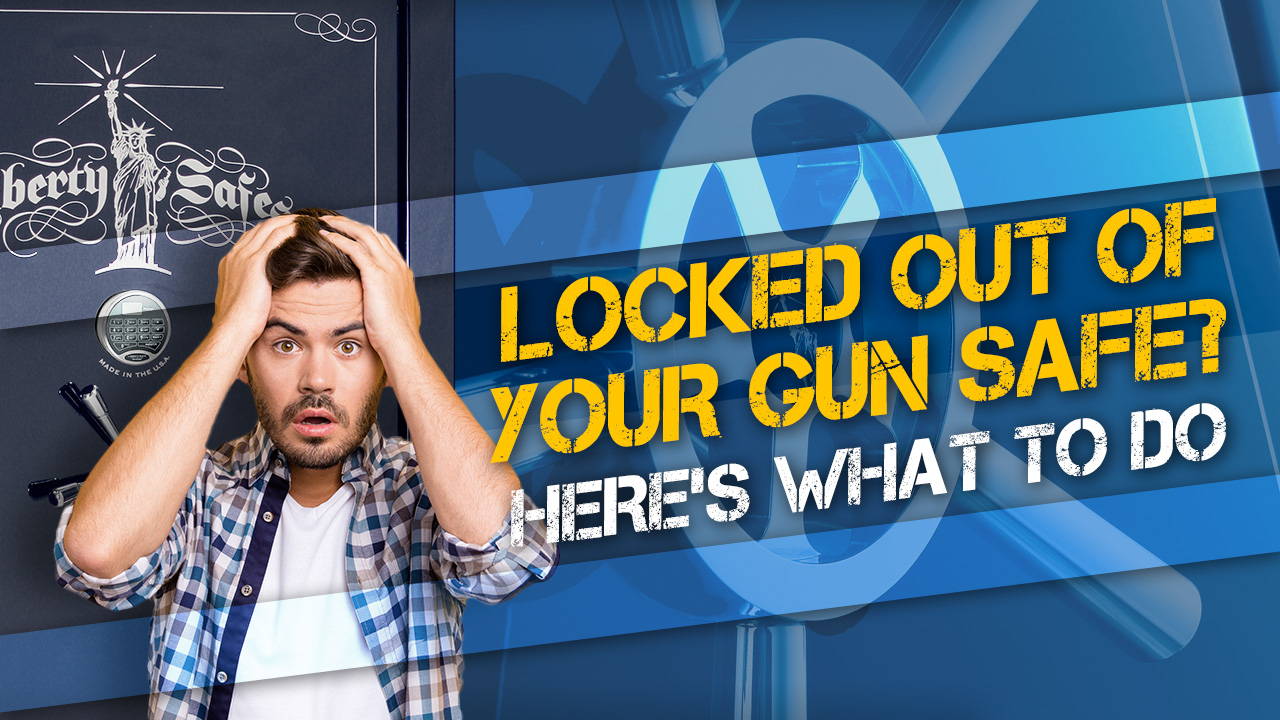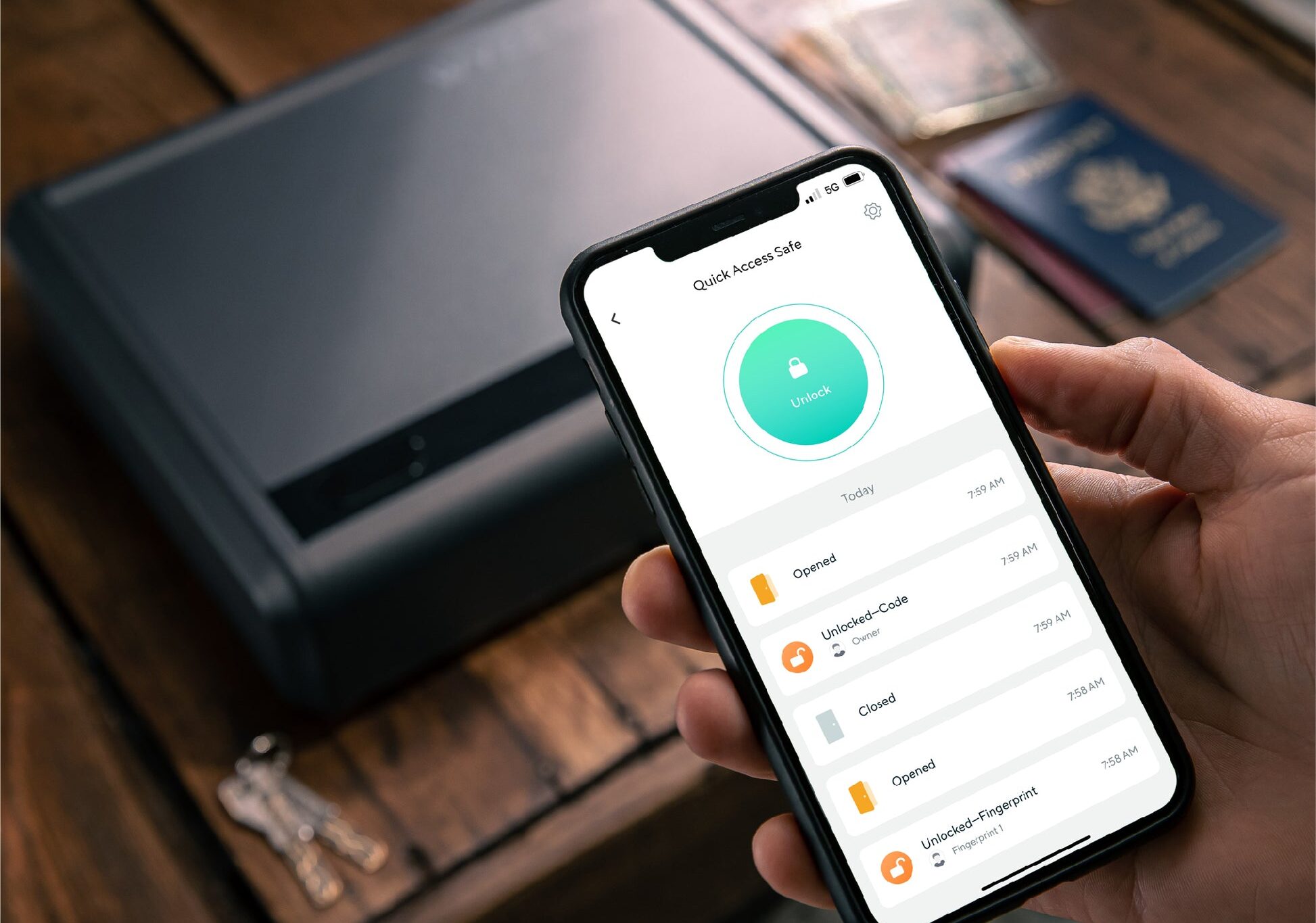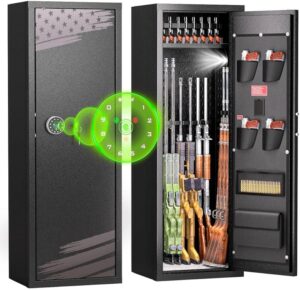“Attempting to open a jammed gun safe involves careful inspection and troubleshooting. Start by checking for visible damage or foreign objects obstructing the locking mechanism. Use the override key provided by the manufacturer, if available. Confirm the correct combination or code entry and gently tap the safe with a rubber mallet to release any internal components. Apply lubrication to the locking mechanism for smoother operation.”
Ensuring the security of your valuables and firearms is paramount, and a gun safe is a robust solution for this purpose. Unfortunately, even the sturdiest gun safes can sometimes become jammed, potentially due to a variety of reasons including mechanical failure, a dead battery, or a misaligned locking bolt.
Dealing with a jammed safe requires a careful approach to avoid damaging the safe or its contents. This introduction sets the stage for gun owners to navigate the delicate process of regaining access to their secured items, emphasizing the importance of safety, the relevance of expert assistance, and the use of proper methods. It’s crucial to maintain calm and seek reliable solutions to resolve the jam without compromising the integrity or security of the safe.

Credit: armadillosafes.com
Safety First: Preparing To Tackle A Jammed Gun Safe
A jammed gun safe is more than just an inconvenience. It’s a safety hazard. Before attempting to open it, it’s vital to plan with care. A step-by-step approach is the safest way to proceed. Let’s take on this challenge with safety as our top priority. Understand the risks and prepare accordingly to avoid any accidents or damage to the gun safe.
Assess The Situation
Begin by examining your jammed gun safe. Look for any obvious signs that could explain why it’s stuck. Is the keypad responsive? Is there a key override available? Don’t force it open. If the issue is not apparent, consulting the manual or manufacturer might help.
Gear Up For Safe Handling
It’s essential to gear up with the right safety equipment. Gloves will protect your hands, while eye protection can keep you safe if the safe’s mechanism springs loose unexpectedly.
- Wear thick gloves: To prevent cuts and scrapes.
- Use eye protection: Safety glasses are a must.
- Keep the area clear: Ensure no one is nearby, especially children.
- Have your phone ready: In case you need to call for professional help.
Identifying Common Causes Of A Jammed Safe
Discovering the reasons behind a jammed gun safe is vital for a swift, safe resolution. Let’s investigate common issues that could lead to your dilemma:
Faulty Lock Mechanism
Safes depend on precise lock mechanisms to ensure security. Over time, these mechanisms may suffer wear or damage. Signs of a faulty lock mechanism include difficulty turning the handle even with the correct combination or key, or a handle that turns but doesn’t unlock the safe.
Battery Failure In Electronic Keypads
Modern safes often feature electronic keypads that require power to function. A dead battery is a common issue that’s easy to overlook. If your safe’s keypad doesn’t light up or respond, a battery swap might be the quick fix you need.
Obstructions And Debris
Dirt, dust, and foreign objects can sneak into the smallest crevices of your safe, leading to jamming. Routinely check for any visible obstructions around the door and the locking bolts. Regular maintenance helps prevent this issue,
For each of these common issues, it’s essential to recognize the problem before deciding on a safe and appropriate solution. If the issue persists, seeking professional assistance is advised to avoid damage to your safe or harm to yourself.
Manual Techniques To Open A Stuck Safe
Safes protect our valuables. But a jammed safe can cause a headache. No need to panic, though! Here are manual techniques to open a stuck safe. These methods are safe and require no special tools.
Using The Override Key
Most small gun safes come with an override key. It opens the safe when the digital keypad fails. Find your safe’s manual. Look for the key’s location. Insert it into the override lock. Turn it gently to open your safe.
Dial Manipulation For Combination Locks
If your safe has a dial combination lock, use dial manipulation. Start at zero. Turn the dial slowly. Feel for the click or a change in resistance. This indicates the correct number alignment. Repeat this process until the safe opens.
Safe Bouncing: A Last Resort?Safe Bouncing: A Last Resort?
Safe bouncing might open it. Only use this as a last resort. Hold the safe a few inches off the ground. Drop it on a hard surface while turning the handle. It might disengage the lock. Never use too much force. It can damage the safe.
Technical Solutions For Electronic Issues
Dealing with a jammed gun safe can be frustrating, especially when it’s an electronic issue. Electronic safes are usually very reliable, but like all technology, they can experience problems. Whether it’s a battery issue, keypad malfunction, or circuit problem, finding the right technical solution is crucial to regain access to your valuables without compromising safety. The following are some technical solutions for common electronic issues you might encounter with your gun safe.
Battery Replacement And Power Issues
Check your safe’s battery if you notice the keypad isn’t responding. Low power can lead to a jammed safe.
- Locate the battery compartment. It’s often found on the keypad or inside the safe door.
- Replace the old batteries with new ones, ensuring they are correctly installed.
- If your safe has an external power supply, inspect the connections for any loose cables.
Keypad Troubleshooting
Key in your code slowly to ensure each digit registers. Sometimes pressing the buttons too quickly can cause an error.
- Press each key individually and listen for the beep or look for the light that indicates the key was recognized.
- Clean the keypad gently with a dry cloth to remove dirt or residue that could prevent proper function.
- If the keypad is unresponsive, consult the safe’s manual for a reset or reprogramming procedure.
Circuitry Checks
Electronic safes rely on proper circuitry function. A glitch in the system can cause a lockout.
| Step | Action | Expected Outcome |
|---|---|---|
| 1 | Inspect all visible wires and connections. | No loose or damaged wires. |
| 2 | Perform a soft reset if the safe has a reset button. | Safe should beep and reset, allowing you to enter the code. |
| 3 | Consult a professional for a thorough diagnostic. | Safe will be checked for hidden electronic issues and repaired. |
If these steps do not solve the issue, you may need to contact customer service for your safe brand or hire a locksmith skilled in electronic safe repair.
Professional Help: When To Call An Expert
If your gun safe is stuck shut, it’s crucial to address the issue without causing damage. Seek a certified locksmith’s expertise when your attempts at safe opening don’t resolve the jam. Their specialized tools and knowledge ensure a secure, damage-free solution.
Opening a jammed gun safe can be a tricky task. When DIY methods fail and frustration kicks in, it’s time to call in a professional. A locksmith or safe technician has the tools and expertise to handle the job without damaging the safe or its contents. Recognize the signs that indicate the need for professional assistance.
Signs You Need A Locksmith Or Safe Technician
- Key turns but doesn’t unlock – This could mean a broken mechanism.
- No response to the combination – Possible electronic or mechanical failure.
- Repeated error messages – Your safe could be in lockout mode.
- Physical damage to the safe – An expert can assess if repair is possible.
- Strange sounds – Clicking or grinding noises are a red flag.
If you notice any of these signs, avoid tampering with the safe further and contact a professional immediately. Timely intervention can prevent further damage and ensure the safety of your valuables.
Maintaining Your Safe To Avoid Future Jams
Regular maintenance is key to preventing safe jams. Here are some tips:
- Yearly Professional Inspections – Keep mechanisms functioning smoothly.
- Keep It Clean – Dust and debris can cause jams.
- Lubricate Locks – Use a safe-approved lubricant on moving parts.
- Update Combinations – Change codes periodically to ensure security.
- Battery Checks – For electronic safes, replace batteries regularly.
By following these steps, you’ll reduce the chances of future jams. Safe maintenance is a small investment compared to the cost of repairing a forced entry. Stay diligent and your safe will protect your valuables for years to come.

Credit: www.libertysafe.com

Credit: www.amazon.com
Frequently Asked Questions On How To Safely Open A Jammed Gun Safe
How Do You Unlock A Jammed Safe?
To unlock a jammed safe, first try entering the code again after a short wait. Gently tap the safe with a rubber mallet near the lock mechanism. Contact the manufacturer for assistance or hire a professional locksmith if these steps fail to resolve the issue.
Why Is My Safe Beeping And Not Opening?
Why Won’t My Browning Safe Open?
If your Browning safe won’t open, there could be several reasons for this issue. Here are some steps you can take to troubleshoot and potentially resolve the problem:
-
Check the Battery:
- Browning safes with electronic locks are typically powered by batteries. Ensure that the batteries are not dead or low.
- Replace the batteries with fresh ones, following the manufacturer’s recommendations.
-
Verify the Code or Combination:
- Double-check that you are entering the correct code or combination. Refer to the user manual for your Browning safe to ensure you are following the correct procedure.
-
Time Delay Feature:
- Some safes have a time delay feature, which means there is a waiting period between entering the code and the safe opening. Check if your safe has this feature and wait for the specified time.
-
Override Key:
- Browning safes often come with an override key for emergency access. Locate the key, follow the manufacturer’s instructions, and attempt to open the safe using the key.
-
Lockout Mode:
- Browning safes may have a lockout mode that activates after a certain number of incorrect code entries. Refer to the user manual to understand the lockout policy and wait if necessary.
-
Mechanical Issues:
- If there are mechanical issues, such as a jammed bolt or a problem with the locking mechanism, contact Browning’s customer support or a professional locksmith for assistance.
-
Contact Browning Support:
- If you’ve tried the above steps and are still unable to open the safe, it’s advisable to contact Browning’s customer support for assistance. They can provide specific guidance based on the model of your safe and the nature of the issue.
Remember to avoid using excessive force or attempting to pry the safe open, as this can cause further damage. If the safe is under warranty, reaching out to the manufacturer’s support is crucial to ensure that any necessary repairs or replacements are carried out appropriately.
What Happens If Your Sentry Safe Won’t Open?
If your Sentry Safe won’t open, it can be a frustrating situation, but there are several potential reasons and steps you can take to troubleshoot and resolve the issue:
-
Check the Battery:
- Many Sentry Safes with electronic locks use batteries for power. Ensure that the batteries are not dead or low.
- Replace the batteries with fresh ones according to the manufacturer’s recommendations.
-
Verify the Code or Combination:
- Double-check that you are entering the correct code or combination. Refer to the user manual for your Sentry Safe to make sure you are following the correct procedure.
-
Override Key:
- Sentry Safes typically come with an override key for emergency access. Locate the key, follow the manufacturer’s instructions, and attempt to open the safe using the key.
-
Time Delay Feature:
- Some safes have a time delay feature, which means there is a waiting period between entering the code and the safe opening. Check if your safe has this feature and wait for the specified time.
-
Lockout Mode:
- Sentry Safes may have a lockout mode that activates after a certain number of incorrect code entries. Refer to the user manual to understand the lockout policy and wait if necessary.
-
Mechanical Issues:
- If there are mechanical issues, such as a jammed bolt or a problem with the locking mechanism, contact Sentry Safe’s customer support or a professional locksmith for assistance.
-
Contact Sentry Safe Support:
- If you’ve tried the above steps and are still unable to open the safe, it’s advisable to contact Sentry Safe’s customer support for guidance. They can provide specific instructions based on the model of your safe and the nature of the issue.
Remember not to use excessive force or attempt to pry the safe open, as this can cause further damage. If the safe is still under warranty, reaching out to the manufacturer’s support is crucial to ensure that any necessary repairs or replacements are handled appropriately.
Conclusion
Dealing with a jammed gun safe can be stressful. But with the right approach, persistence, and safety measures, you can regain access without compromising your security. Remember, if you’re hesitant or the situation worsens, professional locksmiths are your go-to solution.
Stay safe and prepared by understanding the tips discussed, ensuring that you can tackle any jam with confidence.



